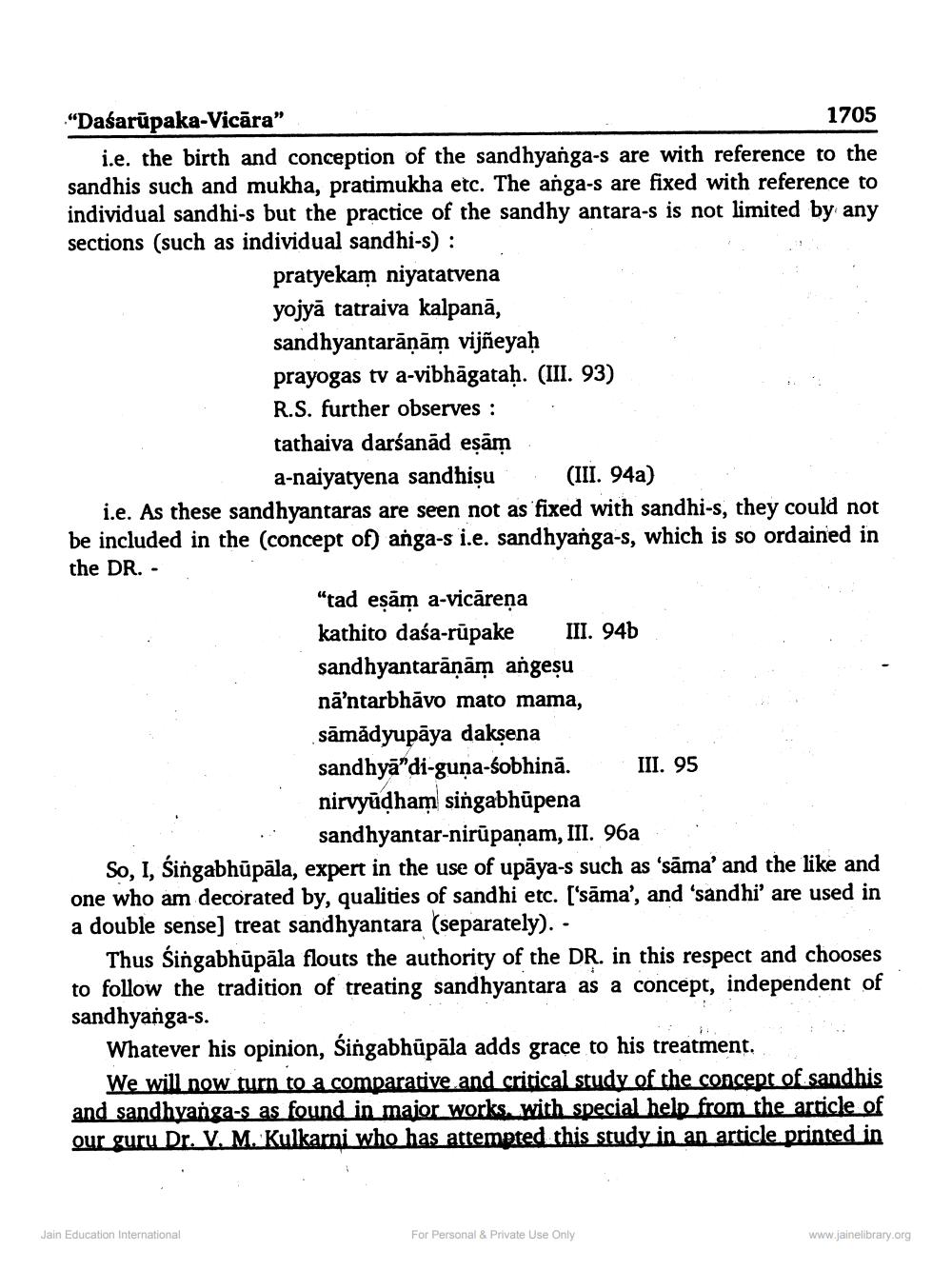________________
“Dasarūpaka-Vicāra”
1705 i.e. the birth and conception of the sandhyanga-s are with reference to the sandhis such and mukha, pratimukha etc. The anga-s are fixed with reference to individual sandhi-s but the practice of the sandhy antara-s is not limited by any sections (such as individual sandhi-s) :
pratyekam niyatarvena yojyā tatraiva kalpanā, sandhyantarāņām vijñeyaḥ prayogas tv a-vibhāgataḥ. (III. 93) R.S. further observes : : tathaiva darśanād eşām
a-naiyatyena sandhișu (III. 94a) i.e. As these sandhyantaras are seen not as fixed with sandhi-s, they could not be included in the (concept of) anga-s i.e. sandhyanga-s, which is so ordained in the DR. -
"tad eșām a-vicāreņa kathito daśa-rūpake III. 94b sandhyantarāņām angeșu nä’ntarbhāvo mato mama, sāmádyupāya dakşena sandhyā"di-guna-sobhinā. III. 95
nirvyūdham singabhūpena
... sandhyantar-nirūpaņam, III. 96a So, I, Śingabhūpāla, expert in the use of upāya-s such as 'sāma' and the like and one who am decorated by, qualities of sandhi etc. ['sāma', and 'sandhi' are used in a double sense) treat sandhyantara (separately). -
Thus “ingabhūpāla flouts the authority of the DR. in this respect and chooses to follow the tradition of treating sandhyantara as a concept, independent of sandhyanga-s.
Whatever his opinion, singabhūpāla adds grace to his treatment.
We will now turn to a comparative and critical study of the concept of sandhis and sandhyanga-s as found in major works with special help from the article of our guru Dr. V. M. Kulkarni who has attempted this study in an article printed in
Jain Education International
For Personal & Private Use Only
www.jainelibrary.org




